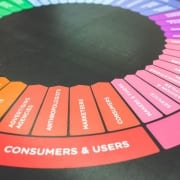How Your Business Can Maximize Its Marketing Efforts
Marketing is far more than a line item on your budget; it’s the machinery that propels your business forward. But here’s the dilemma: how do you make every pound spent convert into something valuable? How do you get from point A—spending on ads, to point B—seeing a measurable ROI? In this article, we’ll explore a myriad of strategies and approaches to help you get the most out of your marketing efforts.
Understanding Your Target Audience
First things first, who exactly are you trying to reach? You could have the flashiest marketing campaign in the world, but if it’s not resonating with your target audience, you might as well be throwing confetti at a wall. Research is your best friend here. We’re talking surveys, customer interviews, and yes, even lurking on social media. Get into the heads of your consumers and find out what makes them tick.
It’s not enough to know your audience; you need to understand them. What are their pain points? What solutions are they seeking? For example, if you’re in the tech business, are they more concerned with usability or security? This is why it’s always worth reading up on this year’s B2B tech marketing trends. The experts over at Elevation Marketing have some intriguing insights that could help you fine-tune your strategy.
The Power of Content Marketing
Remember the stories your grandma used to tell you before bed? They were captivating, weren’t they? Now, imagine applying that same narrative genius to your marketing. Content marketing isn’t just about churning out articles; it’s about telling a compelling story. Whether you’re crafting blog posts, videos, or infographics, make sure they serve a purpose and connect emotionally with your audience.
People can smell a hard sell from miles away. Gone are the days of in-your-face advertising. Consumers today are looking for authentic connections. Share customer testimonials, behind-the-scenes looks, and stories that resonate with your audience. Authenticity builds trust, and trust converts leads into customers. It’s as simple as that.
Ensure You Understand SEO
You’ve heard it a million times: SEO is crucial. But let’s break it down. SEO starts with keywords. Think of them as the breadcrumbs that lead Hansel and Gretel to your website. Do your homework, use keyword planning tools, and make sure those keywords are sprinkled naturally throughout your content. This isn’t about keyword stuffing; it’s about creating valuable content that search engines—and humans—will love.
While on-page SEO gets most of the limelight, off-page SEO is just as crucial. We’re talking backlinks, social signals, and even guest blogging. These elements don’t just boost your search ranking; they build your brand’s reputation. It’s important to note that Google is tackling clickbait on its search engine, so you should be wary of how you craft your marketing efforts.
Utilise Social Media Correctly
Not all social media platforms are created equal, especially when you’re marketing to a UK audience. While it might be tempting to have a presence everywhere, you’ll spread yourself too thin. Pick 2 or 3 platforms where your target audience is common. Are you B2B? LinkedIn might be your goldmine. Targeting a younger demographic? Don’t underestimate the power of Instagram or TikTok.
It’s easy to get caught up in the vanity metrics—likes, follows, retweets. What matters more is genuine interaction. Respond to comments, create polls, and ask questions that encourage a dialogue. The more engaged your audience is, the more likely they are to convert into customers.
Utilise Email Marketing
Believe it or not, email marketing still has one of the highest ROIs out there. But there’s a catch—the subject line. It’s the first thing people see, and it can make or break your campaign. A/B test different subject lines to see what resonates with your audience. Be clear, be concise, and for heaven’s sake, be interesting.
Generic emails are about as exciting as watching paint dry. Seriously, no one wants to feel like they’re just another number on your list. This is where segmentation comes into play. Group your audience based on behaviour, location, or interaction with your brand. Then tailor your content to each segment. Trust us; personalisation goes a long way.
Collect Analytical Data
The data you gather can tell you what’s working and what’s as useful as a chocolate teapot. With tools like Google Analytics or even built-in metrics on social media platforms, you can track user behaviour, conversion rates, and more. Don’t just collect data; act on it.
A/B testing allows you to try out different strategies side-by-side to see what’s effective and what’s not. Want to know if that quirky email subject line is a hit or a miss? A/B test it. Curious if your new landing page design converts better? A/B test it. You get the gist.













Leave a Reply
Want to join the discussion?Feel free to contribute!